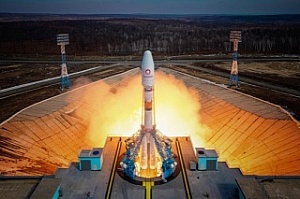Alexander Kiryushkin, a postgraduate student of the TSU Faculty of Physics and Technology, and Leonid Minkov, professor in the Department of Mathematical Physics, have improved the algorithm for calculating intra-chamber processes in rocket engines, significantly increasing its accuracy and reducing the operating time to 2 hours.
The results of the work of the Tomsk scientists are presented in the journal Computer Research and Modeling (Scopus, Q3).
As a rule, modern solid-propellant rocket engines (solid propellant rocket engines) have complex-shaped charges characterized by a three-dimensional or axisymmetric geometry. The flow of gases inside the combustion chamber can be complex: there may be pressure pulsations, formation of vortex structures, and stagnant zones. Experimental study of the processes occurring in solid propellants is associated with certain difficulties due to their transience, high temperatures, and pressures. Mathematical modeling is an essential component of the study of such processes.
The Tomsk scientists have developed an algorithm that helps to increase the accuracy of the results, which helps to reduce the number of time-consuming experiments. Additionally, it becomes possible to simulate solid fuel configurations, the calculation of which with existing techniques was either problematic in implementation or gave incorrect results. However, the use of this algorithm requires a lot of time for calculations, due to its detail, in comparison with the existing ones.
- Computer calculation of one configuration can take up to one week, which is unacceptable for the design stage when many different configurations need to be quickly considered. On the other hand, there is not always access to the use of high-performance computing clusters. Therefore, we have parallelized and optimized the algorithm using NVIDIA graphics processors and CUDA technology, - Alexander Kiryushkin said about the algorithm modernization.
The use of a parallel implementation made it possible to achieve a performance of 3 teraflops (3х1012) floating point operations per second. This significantly reduced the running time of the algorithm: down to 1-2 hours. When the calculation results of the algorithm developed by the scientists were compared, with the existing ones, the difference was 20%, which confirms the greater accuracy of the description.

